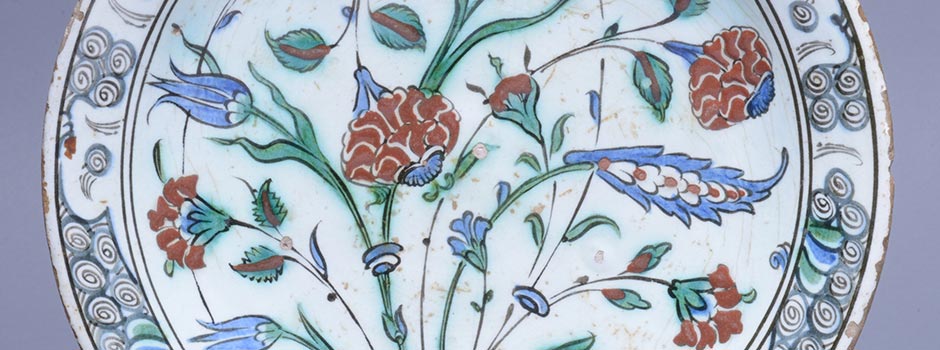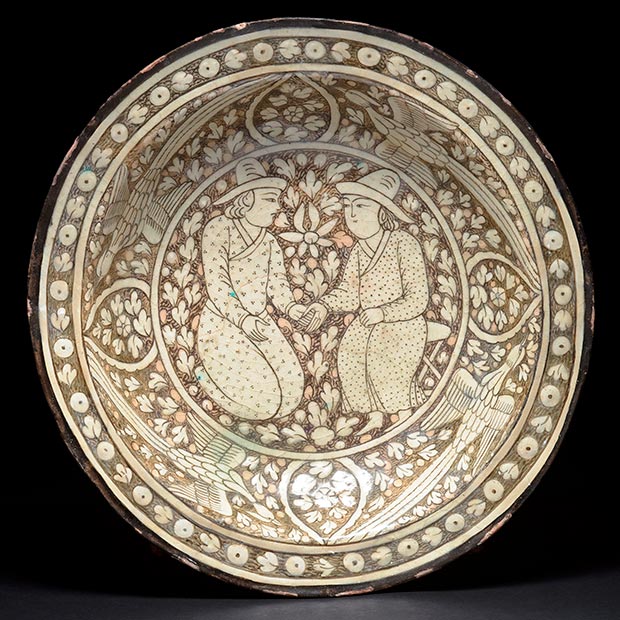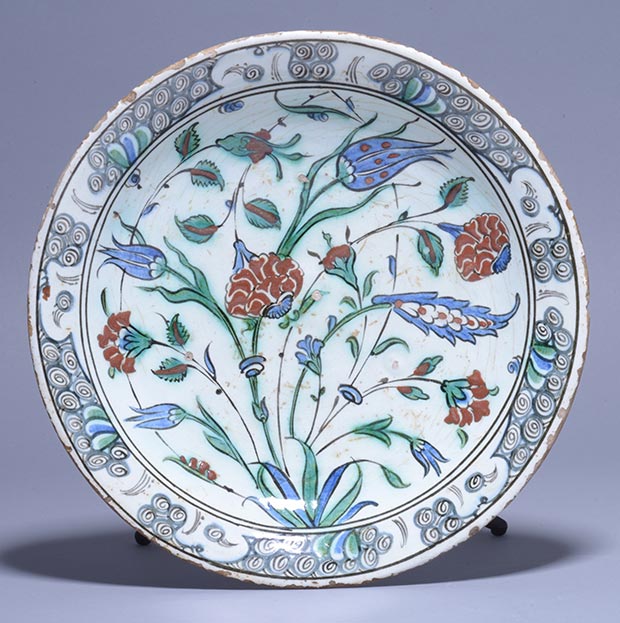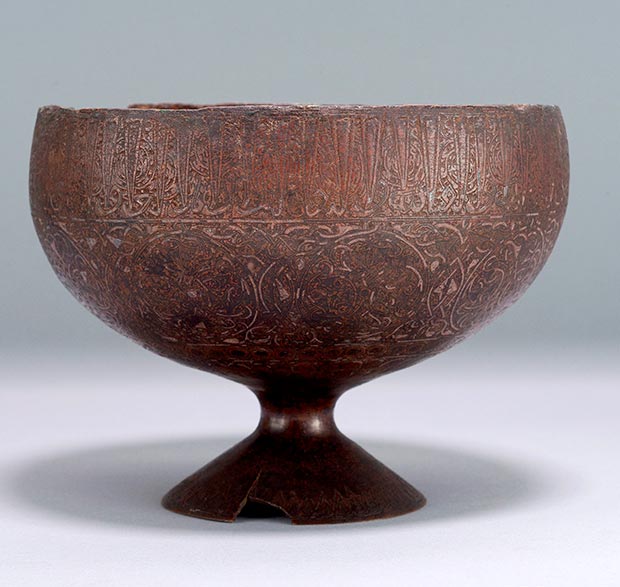
ART AUCTION AT FLORENCE NUMBER NINE The First Islamic Art Auction in Italy
Mar 10, 2014 Art Auction
The sale will consist of just over one hundred objects chosen according to the needs and tastes of the London and Anglo-Saxon markets, but also for the historical importance of some of the items that are true testimonies of these far-off worlds.
Pottery, metal, fabrics, weapons, jewellery – from a large number of countries – will enliven and colour the catalogue that will soon be available online.
On March 22, 2014 at 16:00 h the auction house Florence Number Nine will host a conference titled 'Light's Reflections: The Metalwork throughout the Islamic Art' by Dr. Sherif el Sebaie.
This large plate, resting on a disc, bears a depiction in relief characterised by the division of the plate into the rim, the body and the base. The base bears a depiction in relief of figures holding hands who can be identified as Mongols for their features and for the headgear, the shape of which was characteristic of the period. It is covered in grey-green slip, decorated with black and white slip under transparent glaze from Iran, 13th-14th century.
 Photo caption: A Sultanabad dish. Iran, 13th-14th century, Dim. 38 cm / Courtesy of Florence Number Nine
Photo caption: A Sultanabad dish. Iran, 13th-14th century, Dim. 38 cm / Courtesy of Florence Number Nine
A plate with blue, green and red decoration under transparent glaze, resting on a disc, with rounded walls and a short rim. The object is decorated with tulips, roses, carnations and hyacinths, characteristic of the style known as the "four flowers". The decoration that covers the entire surface is very fluid, albeit organised as each flower has its root. The rim is embellished with a pattern of rocks and waves of Chinese origin and the exterior by a decorative crown highlighted by small flowers and circular motifs.
 Photo caption: An Iznik plate. Iznik, Turkey, Ottoman period, 16th-17th (ca. 1580) / Courtesy of Florence Number Nine
Photo caption: An Iznik plate. Iznik, Turkey, Ottoman period, 16th-17th (ca. 1580) / Courtesy of Florence Number Nine
A fine miniature probably depicting Maharaja with his servant. The nobleman is portrayed in profile smoking, with the left hand holding a shield, symbol of military strength, and the right holds the narghilé tube. The servant waves a swatter. India, possibly Jodhpur, 19th century.
 Photo caption: A Rajasthani miniature of a Maharaja / Courtesy of Florence Number Nine
Photo caption: A Rajasthani miniature of a Maharaja / Courtesy of Florence Number Nine
Bronze with silver inlay from Iran, 14th Century. An important bowl raised on a tall elongated foot. Two horizontal bands decorate the body of the object: one just below the upper edge bears cursive inscriptions and the lower one bears repeated floral motifs and arabesque patterns arranged over the surface in a delicate circular movement.
 A high-tin bronze drinking vessel. Iran, 14th century / Courtesy of Florence Number Nine
A high-tin bronze drinking vessel. Iran, 14th century / Courtesy of Florence Number Nine
The heart of Florence Number Nine is in the experts who animate it. A choice that is not at all obvious for an auction house, as explained by Daniele Soldi, patron and CEO of Florence Number Nine: "We wanted to give the auction house a very strong cultural imprint. So we decided to entrust the departments to directors who were already professionals in the antiquities market, but who were also scholarly enthusiasts, who keep themselves updated, travel and who are willing to share their knowledge that they have accumulated over the years with others. Florence Number Nine sells art, but is open to anyone who is truly interested to learn about these worlds."
Florence Number Nine is therefore a crossroads of precious objects, where one can understand, discuss, touch, appreciate in ecstatic admiration and, why not, buy. There will be a continuous movement and change - being the very nature of an auction house – of paintings, sculptures, carpets, prints, jewellery, furniture, wine and accessories, of every period and from every corner of the world. It is with great pleasure, that Florence Number Nine makes these objects available to the enthusiasts to admire them before buying them.
Comments
Add a comment